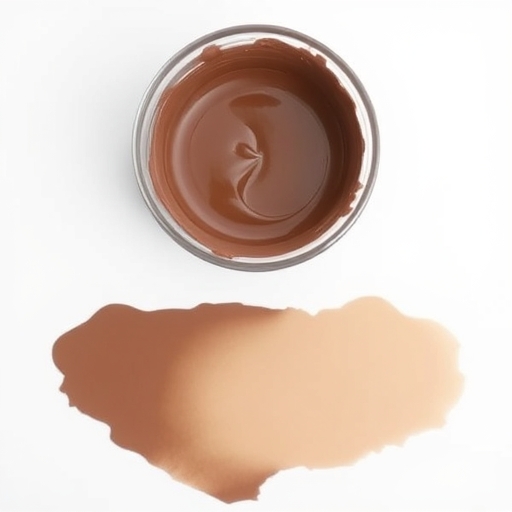The Art and Science of Making Brown Paint – From Earth Tones to Rich Espresso
Brown. A seemingly simple color, yet one capable of infinite variations, from the subtle warmth of sandy beige to the deep, brooding richness of dark chocolate. Unlike primary colors like red, yellow, and blue, brown isn’t a single pigment but a complex mixture. This article delves into the fascinating world of brown paint creation, exploring different methods, pigment choices, and considerations for achieving your desired shade.
Understanding the Components of Brown Paint
Before we dive into recipes, it’s essential to understand the building blocks of paint:
Pigment: This is the colored powder that gives the paint its hue. Brown pigments can be naturally occurring earth pigments or synthetically created.
Binder: This holds the pigment particles together and allows the paint to adhere to a surface. Common binders include oil (for oil paints), acrylic polymers (for acrylic paints), and water (for watercolors and many tempera paints).
Solvent: This thins the paint, making it easier to apply. Solvents vary depending on the binder; oil paints use mineral spirits or turpentine, acrylics use water, and watercolors use water.
Creating Brown Paint: Different Approaches
The beauty of making brown paint lies in its versatility. You can achieve countless shades by combining different pigments and adjusting ratios. Here are some common methods:
1. Mixing Primary Colors: The Classic Approach
The simplest method involves mixing the three primary colors: red, yellow, and blue. However, the ratios are crucial, and achieving a nuanced brown requires careful experimentation.
Warm Browns: Emphasize red and yellow, adding a touch of blue to deepen the hue. A good starting point might be 2 parts red, 1 part yellow, and 1/2 part blue.
Cool Browns: Increase the blue component and reduce the red. Try 1 part red, 1 part yellow, and 2 parts blue.
Reddish Browns: Dominate with red, adding smaller amounts of yellow and blue.
Yellowish Browns: Lean towards yellow, with less red and blue.
Limitations: Mixing primaries can sometimes result in muddy or dull browns. The quality of your primary pigments significantly affects the final result. Using high-quality pigments will yield richer, more vibrant browns.
2. Utilizing Earth Pigments: A Natural Approach
Earth pigments are naturally occurring minerals ground into powder. They offer unique characteristics and often create beautiful, earthy browns. Examples include:
Raw Umber: A naturally occurring brown pigment containing iron oxides and manganese oxides. It has a warm, yellowish-brown tone.
Burnt Umber: Raw umber that has been heated, resulting in a darker, reddish-brown hue.
Raw Sienna: A yellowish-brown pigment containing iron oxides.
Burnt Sienna: Raw sienna that has been heated, resulting in a reddish-brown color.
Using earth pigments provides a natural and often more nuanced brown than mixing primaries. You can mix these earth pigments together, or with other pigments, to achieve a wide range of shades. For example, mixing raw umber and burnt sienna can create a rich, earthy brown.
3. Employing Secondary Colors: A Simplified Approach
Instead of starting with primaries, you can use secondary colors (green, orange, and purple) as a shortcut.
Orange and blue: A surprisingly effective combination, resulting in a variety of browns depending on the ratio.
Green and red: Can create darker, olive-toned browns.
This method provides a faster route to browns, though less control over the subtleties of the final shade than mixing primaries directly.
4. Incorporating Black: Darkening the Palette
Adding black to other brown mixtures significantly deepens the color. However, be cautious; too much black can result in a dull, lifeless brown. Use it sparingly to achieve a deep, rich tone.
Binder Selection: Oil, Acrylic, or Watercolor?
The choice of binder significantly affects the properties and final appearance of your brown paint:
Oil paints: Offer a rich, luminous quality, allowing for blending and glazing techniques. They have a long drying time.
Acrylic paints: Dry quickly, are water-based and easily cleaned with water. They’re versatile and suitable for various surfaces.
Watercolors: Transparent and delicate, offering a unique aesthetic. They’re ideal for washes and layering.
Recipe Examples: Achieving Specific Brown Shades
Let’s look at some specific recipes, remembering that these are starting points; experimentation is key:
Recipe 1: Warm Terracotta Brown (Acrylic)
3 parts Burnt Sienna
1 part Raw Umber
1/2 part Yellow Ochre
Acrylic Medium (adjust for desired consistency)
Recipe 2: Deep Chocolate Brown (Oil)
2 parts Burnt Umber
1 part Raw Sienna
1/4 part Mars Black
Linseed Oil (adjust for desired consistency)
Recipe 3: Cool Grey-Brown (Watercolor)
2 parts Burnt Umber
1 part Ultramarine Blue
1/2 part Raw Sienna
Water (adjust for desired consistency)
Tips for Success
Start small: Mix small batches first to test your ratios.
Use quality pigments: Higher-quality pigments yield richer colors.
Gradually add pigments: Avoid adding too much pigment at once; it’s easier to add more than to remove it.
Experiment: Don’t be afraid to try different combinations. Note your ratios for future reference.
* Clean your palettes and tools: Proper cleaning prevents unwanted color mixing in subsequent projects.
Comparison Table: Brown Pigment Properties
| Pigment | Color | Warmth/Coolness | Transparency | Lightfastness |
|---|---|---|---|---|
| Raw Umber | Yellowish Brown | Warm | Opaque | Excellent |
| Burnt Umber | Reddish Brown | Warm | Opaque | Excellent |
| Raw Sienna | Yellowish Brown | Warm | Semi-Transparent | Excellent |
| Burnt Sienna | Reddish Brown | Warm | Semi-Transparent | Excellent |
| Mars Black | Black | Neutral | Opaque | Excellent |
| Ultramarine Blue | Blue | Cool | Semi-Transparent | Excellent |
Frequently Asked Questions (FAQ)
Q: Can I use household ingredients to make brown paint?
A: While you can experiment with natural ingredients like coffee grounds or cocoa powder, the resulting “paint” will likely lack durability and adhesion. They’re best suited for temporary or craft projects.
Q: How can I achieve a specific shade of brown?
A: The best way is to experiment with different pigment ratios. Start with a base brown and gradually add other pigments to adjust the hue. Keep detailed notes of your successful mixtures.
Q: What’s the difference between raw and burnt pigments?
A: “Burnt” pigments are heated, altering their chemical structure and resulting in a darker, richer hue.
Q: How can I make my brown paint more opaque or transparent?
A: Adjust the amount of pigment in relation to the binder. More pigment generally results in higher opacity. For transparency in watercolors, use less pigment and more water.
Q: How do I store homemade paint?
A: Store your homemade paint in airtight containers in a cool, dark place to prevent it from drying out or degrading.
This comprehensive guide provides a strong foundation for your brown paint-making journey. Remember that the true artistry lies in the exploration and discovery of your own unique brown shades. Embrace experimentation and enjoy the creative process!

